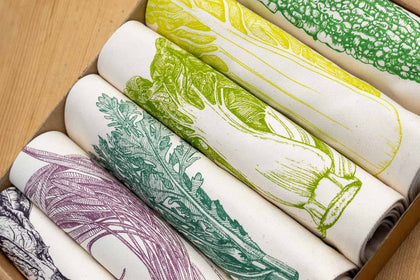Introduction To Korean Cuisine

Korea’s most famous food is kimchi – seasoned and fermented vegetables.
Bright red kimchi is just one of many colours on a Korean table, with bibimbap and gujeolpan (‘platter of nine delicacies’) both served in specialised tableware showcasing the dishes’ individual ingredients.
Korean festivals have a strong emphasis on food, and most are associated with specific dishes. There is red bean porridge at Winter Solstice, gingseng chicken soup over Sambok, (the hottest three days of the summer), sweet tteok rice cakes for weddings, tteok soup at New Year, and stuffed tteok steamed over pine needles to celebrate the harvest.
David Chang’s Momofuku chain has popularised fusion Korean cooking – his Momofuku book ranges from the traditional (kimchi stew with rice cakes and shredded pork) to the non-traditional (kimchi consommé for oysters) and much in between.
Click here for a range of Korean cookbooks, cookware and ingredients


